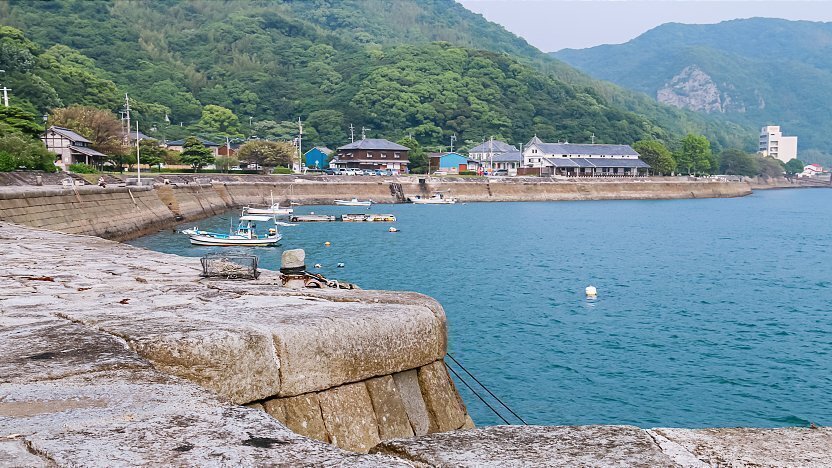Misumi West Port

The Misumi West Port (三角西港, Misumi Nishikō) is a historic port built by the Meiji Government in 1884. Its location along the Ariake Sea in Kumamoto Prefecture was chosen due to the naturally deep waters which could accommodate large ships. The port developed into a major shipping point for coal from the Miike Coal Mines as well as commodities like rice, wheat and flour. In 2015, it received world heritage status as one of the Sites of Japan's Meiji Industrial Revolution.
Stone masons from the nearby Amakusa Islands contributed to the construction of the port, and the original stone quay, which can still be seen today, is a testament to their skills. The design of the port also included well laid out roads, drainage canals and bridges, which remain as they were during the Meiji Period and have been designated important cultural properties.

Despite these efforts, the port flourished as a major shipping terminal for only about ten years before slowly falling into obscurity after the construction of a new railroad that connected only the nearby East Port. As a result, the West Port's appearance has remained almost unchanged since the Meiji Period, which is unique among similar sites in Japan.
During the port's heydays, a small town developed around the harbor. Some of the town's buildings, including offices, a storehouse, a ryokan and a court house, survive today and have been preserved or restored. Many are open to the public as museums (free admission), and two have been converted into cafes, providing a pleasant atmosphere to visiting tourists.

Getting there and around
Misumi West Port can be reached from JR Misumi Station in under ten minutes by bus (220 yen one way, one bus/hour) or taxi (around 1000 yen one way). Misumi Station is connected to Kumamoto Station by hourly trains (50 minutes, 760 yen one way, fully covered by the Japan Rail Pass and Kyushu Rail Pass).
Questions? Ask in our forum.


